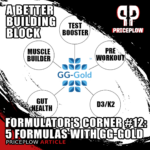Formulator’s Corner on PricePlow
Welcome to PricePlow’s Formulator’s Corner, where we collaborate with industry-leading ingredient suppliers and brands to bring attention to novel supplement formula and flavor ideas that we’d love to see developed!
Subscribe to PricePlow's Newsletter and Formulator’s Corner Alerts
Formulator's Corner #21: A Mood-Boosting PLT Health Fat Burner That Attacks Appetite
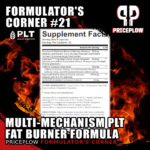
The supplement industry continues to thrive, but the weight management segment definitely faces some challenges. Traditional sales are declining as GLP-1 agonist drugs capture headlines and market share. What the pharmaceutical success really reveals is that consumers desperately want effective satiety solutions, and many are seeking natural alternatives to expensive prescription interventions that often come […]
Continue Reading →
Formulator's Corner #20: Menopause Brain Fog Formula - Memo-Q Meets Functional Chocolate
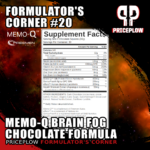
In today's installment of our Formulator's Corner Series, we create a hypothetical functional chocolate supplement specifically designed for women navigating menopause-related cognitive challenges. Will a forward-thinking brand bring this science-backed indulgence to market?
The Silent Struggle: When Brain Fog Clouds the Best YearsMenopause is a universal transition, yet its cognitive effects remain underrecognized and […]
Continue Reading →
Formulator's Corner #19: The Ultimate PLT Health Pre-Workout
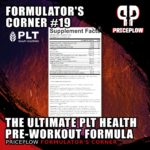
Most pre-workout supplements follow the same tired playbook: caffeine, citrulline, beta-alanine, taurine, and a couple auxiliary ingredients. The result? Too many products that deliver a quick energy spike followed by an inevitable crash, with minimal consideration for training quality, recovery, or long-term performance gains.
What if we could do better?
Enter PLT Health Solutions, […]
Continue Reading →
Formulator's Corner #18: The Women's Performance Stack Powered by effera™ Lactoferrin + Creatine + HMB
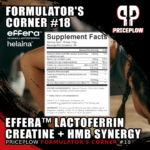
In today's installment of our Formulator's Corner Series, we create a hypothetical supplement for women seeking performance enhancement, recovery, and iron status support. Will some brand take us up on the idea?
The Perfect Storm for Women's Fitness, and The Female Athlete ParadoxSomething extraordinary is happening in women's fitness. Female athletes are finally embracing […]
Continue Reading →
Formulator's Corner #17: Sleep Without Compromise - goBHB Transforms the Sleep Aid Category... With No Melatonin!
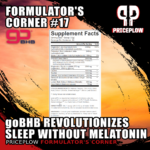
The sleep supplement category stands at a crossroads. While Americans spend billions annually on various sleep aids (such as supplements, devices, and pharmaceuticals), many consumers remain frustrated with existing options that either leave them groggy, create dependency concerns, or simply fail to deliver the restorative sleep they desperately need. The industry has long been dominated […]
Continue Reading →
Formulator's Corner #16: The MalTor Mito-Recovery Pre-Workout That Needs to Exist
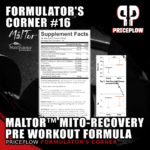
Most pre-workout supplements force you to choose: immediate performance or long-term recovery. Traditional formulas excel at delivering energy and pumps for your current session, but they ignore what happens afterward: the muscle damage, inflammation, and delayed recovery that can derail your training consistency.
This creates a fundamental problem in supplement design. The very products meant […]
Continue Reading →
Formulator's Corner #15: The Ultimate Stim-Free Pre-Workout, Powered by goBHB for Evening Warriors
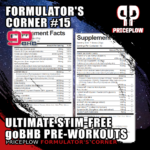
Picture this: it's 6PM, you've just wrapped up a long workday, and you're finally ready to hit the gym. Your body needs energy, your mind craves focus, but there's one major problem -- any pre-workout with real kick will have you staring at the ceiling until midnight.
This is the evening training dilemma that millions […]
Continue Reading →
Formulator's Corner #14: A Holiday Glucose Disposal Agent with NNB Nutrition
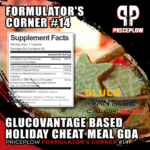
The holiday season is upon us – a time of celebration, family gatherings, and let's be honest, metabolic challenges. From Thanksgiving dinner to Christmas parties to New Year's festivities, we're about to face a gauntlet of delicious but fat- and carbohydrate-heavy meals that can wreak havoc on our blood sugar levels and energy.
While we […]
Continue Reading →
Formulator's Corner #13: A Restorative Nootropic with enfinity Paraxanthine
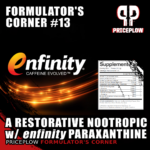
Stimulants have their advantages. When you really need to buckle down and get work done – whether in the gym or while trying to meet a professional deadline – the default solution is typically some variation of caffeine.
The issue with caffeine (and other, more aggressive ingredients) is that while they can make you feel […]
Continue Reading →
